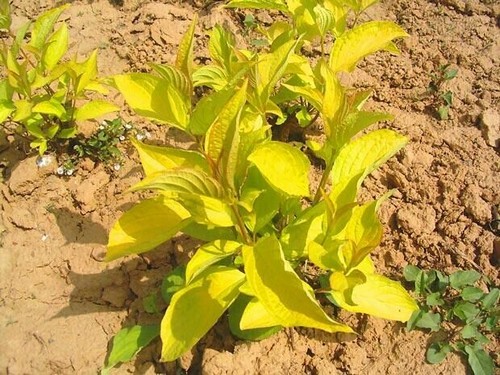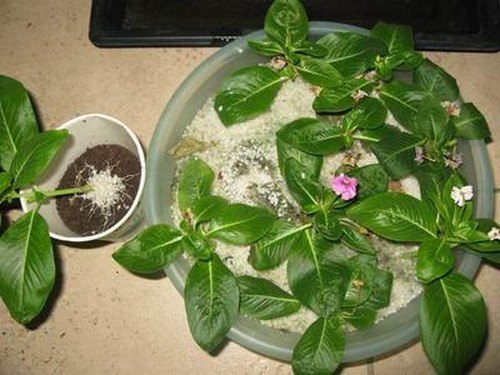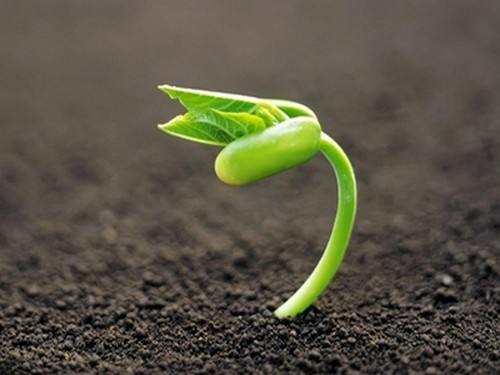Cuttage Seedling technique of Rhizoma Rubra
Red wood autumn dry stem from green to yellow, with the temperature decreases yellow gradually thicker, become golden yellow, in the snow under the sun is extremely bright, the brightest color under the side light, yellow slightly green when backlighting; cold, drought, wind damage, water and moisture resistance, no obvious disease, adapt to various soil and environmental conditions, adaptability, is a very excellent winter branch variety! It can be used as isolation belt, hedge or dotted lawn, suitable for strip planting, color block planting, cluster planting or isolated planting; it is better to plant with red stem products.

Before cutting, there are many preparations, such as cutting collection, cutting interception, cutting treatment, root promotion, shed construction, bed and so on. Here we will give you only a brief introduction to the processing of cuttings; the other processes will be described in detail in other chapters.
Cutting treatment: the cut red wood branches, every 50 branches to be tied up evenly, in the water depth of 5~6cm flat bottom container hydrolysis treatment for 3 days and nights. 6~8h when the water temperature is below 8℃, and 3~ 4h when the water temperature is above 8℃. The following focuses on the relevant technical points for you to introduce red wood cuttings.
1. Cutting conditions: under the condition of building shed, covering shade net, making bed and watering water, the cuttings of 20~30 days can be taken out and transplanted. If the shade net is not covered or the water cannot be supplied in time, and the substrate of the cutting bed is replaced by fine sand, the cutting will directly affect the rooting rate. Therefore, conditions must be met before cuttage.
2. Cutting requirements: on the bed surface of 120cm wide, insert 30 strips per row and 10 rows per meter on the bed surface according to the row spacing of 10cm and the plant spacing of 4 cm. The insertion inclination is 75°, the tip faces north, the upper bud faces south, and the insertion depth reaches the middle bud level with the bed surface.
3. Management after cuttage:
Watering: After inserting the bed surface, water it on the same day, and the amount of watering must reach 2~3cm of accumulated water on the footpath. Pouring once a day in the morning and once a day in the evening. Check, if the bed surface sand layer dry, should be timely watering.
Spraying: Spray fungicide once every half month after cuttage, spray must be evenly sprayed, usually spray 3 times.
Topdressing: Red wood is a tree species with slow rooting, which generally takes 60~90d, and some of them reach more than 100d. After 15 days of cuttage, red wood began to sprout green leaves. Therefore, if not foliar topdressing, only rely on the nutrition of cuttings themselves to promote rooting is not good. For this reason, after leaf expansion, start spraying leaves with 1% glucose or sucrose solution every 10 days or so, starting at 4 p.m. After one month of leaf setting, 0.5% urea plus appropriate trace elements such as zinc, boron, magnesium, manganese, etc., and ABT solution are sprayed on leaves once every half month to supplement nutrition, preserve, protect and increase chlorophyll content and promote rooting.
Temperature and humidity: The temperature in the shed shall be controlled below 28℃. When it exceeds 30℃, timely cooling measures shall be taken. The humidity in the shed shall reach 85%~95%. When it reaches less than 75%, effective measures shall be taken in time to improve the humidity in the shed.
Management: timely removal of bulges and flowering inflorescences, ready to eradicate weeds. Through the practice of cutting red wood, we deeply understand:
The preparation work before cuttage is the foundation; the key is to do a good job in cuttage, and the management of cuttage bed after cuttage is the guarantee. After 60 days, more than one third of the shoots have taken root. At this time, transplant after rain, pick out the black shoots infected by bacteria and give up, and take out the fresh leaves and shoots that have not taken root after callus formation. Then spray ABT solution plus trace element fertilizer on the leaves and continue normal management. After 40 days or so, most of the roots will grow, and then transplant under the wet conditions of the transplant site after rain. The rest will be transplanted after 30 days or so, and the rest will be discarded.
Time: 2019-06-11 Click:
- Prev

Cutting Seedling technique of Catharanthus roseus
The cuttings of Catharanthus roseus are usually cut in spring or early summer, with a length of 8 cm to 10 cm, cut off the lower leaves, leave the top 2-3 pairs of leaves, insert them into the sand bed or rotten leaf soil, keep the soil slightly moist, room temperature 20-24 ℃, and rooting 15-20 days after cutting. Most cuttings are carried out from April to July.
- Next

The Propagation method of Hydrangea
Hydrangea is a common flower plant, also known as eight Immortals, Ziyang Flower, Hydrangea, etc., native to Sichuan and Japan in China. It is a deciduous shrub of the genus Hydrangea of Saxifragaceae. The flowers are almost asexual, and the so-called flowers are just sepals.
Related
- Fuxing push coffee new agricultural production and marketing class: lack of small-scale processing plants
- Jujube rice field leisure farm deep ploughing Yilan for five years to create a space for organic food and play
- Nongyu Farm-A trial of organic papaya for brave women with advanced technology
- Four points for attention in the prevention and control of diseases and insect pests of edible fungi
- How to add nutrient solution to Edible Fungi
- Is there any good way to control edible fungus mites?
- Open Inoculation Technology of Edible Fungi
- Is there any clever way to use fertilizer for edible fungus in winter?
- What agents are used to kill the pathogens of edible fungi in the mushroom shed?
- Rapid drying of Edible Fungi

